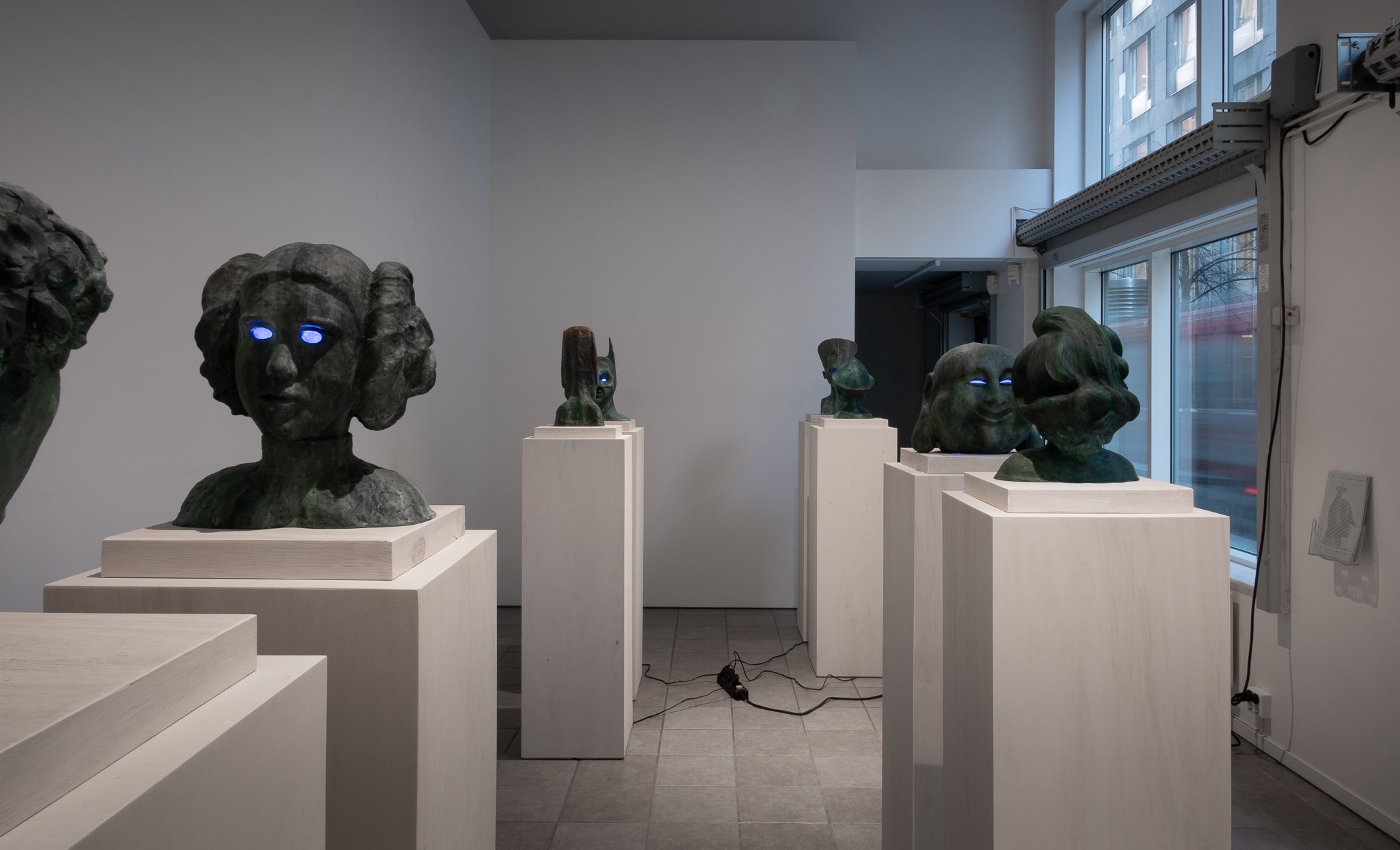Historical Figures
Historical Figures
Historical Figures
ISSUES, Stockholm
2023
For this project, I chose to return to a familiar theme in my work – the notion of time – but approach it from a new angle. Here, I consider historical time, or everything that has transpired since the dawn of man. How is it perceived? Can it be altered, bent or skewed, if famous fictional figures are given equal historical status as their real-life counterparts?
Does Batman belong in the realm of historical or fictional reality? He was “conceived” by human hands, breathed life into through countless retellings of his saga and wields cultural clout. Real people are defined by their roles playing him. So what happens when Batman is added to the pantheon of instantly recognizable historical figures?
I started experimenting with certain historical figures, both real and fictional, by placing them side by side at random. I was curious to see if a figure would remain “charged” or lose its charge, when coupled with seemingly arbitrary partners and removed from its original context and canon.
My intention was to install the figures on the same “plane” by giving them homogenous physical and visual properties. That meant reproducing them all using the same method. I opted for hand-sculpting as opposed to 3D printing.
As reference material in the process I used free 3D files found on the internet, rather than photos of the original statue, person, or sculpture. From the 3D files, I shaped the heads in rigid foam and plastelina. The prototypes were then molded in silicon rubber and fiberglass. The subsequent end products were forged in the molds using resin and a method called slush casting.
The casts I was left with resemble the 3D files they were modeled on: they’re hollow and thin, like skins. They’re not as solid as the people, sculptures, or statues they originate from.
“Pinocchio and Pasqua — what a weird combination,” my former assistant Tommasso commented when I showed him a picture from my studio.
What about my choices of figures to include in this group? Well, they were fairly intuitive. I was interested in establishing contrasts: different eras, realities, cultures and so on. At the same time, they needed to be immediately recognizable. Icons.
---
My brother came to visit me in LA last summer, and I took him to the Getty Villa — a recreated Roman seaside mansion — as part of a cultural tour. Staring into the darkness of those non-eyes was like looking at negative time, at death, or a document of the failure to exist.
The Roman heads influenced several formal decisions in my project. Most importantly, to expose the hollowness of my sculptures, making the eyes windows into the interior from outside, rather than of the exterior world viewed from within.
Eyes, they say, are windows to the soul. Perhaps, then, they’re also windows to time — or the lack thereof.
The patina of the Roman heads also intrigued me. Like withered rock, old wood or human flesh, these surfaces had evidently undergone a beating from the passing of time. It gave them a mortal quality, despite lacking a soul (eyes).
I wanted to translate the look of these aged surfaces to my sculptures. But since they aren’t made of metal it wasn’t a matter of oxidization. I needed to paint the resin to recreate a semblance of bronze patina. Fake bronze à la Hollywood. Another factor complicating their place in time.
Historical fiction and fictive historicity. I am hopeful that this body of work occupies a region between those poles.









